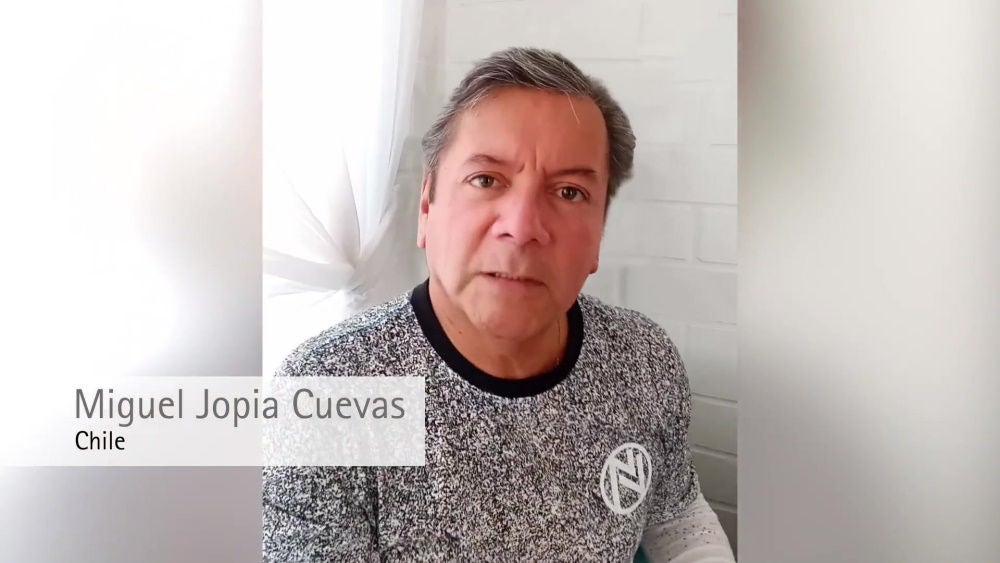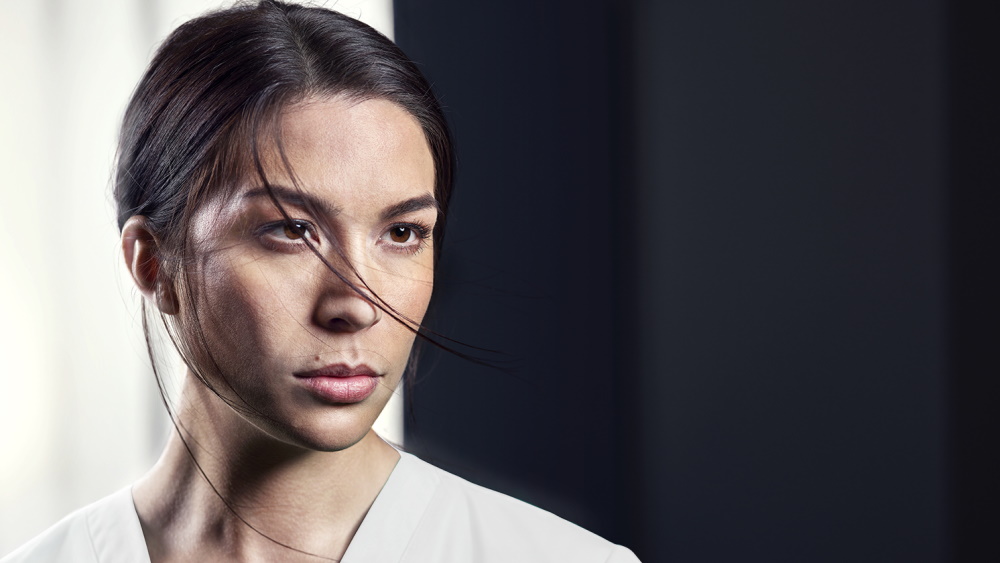You have successfully logged out.
Not registered yet?
Stop pressure ulcer formation
Time to focus on pressure ulcer prevention
We all want to avoid pressure ulcers. Considerable progress has been made in this area the past few years. Nevertheless, pressure ulcers remain a challenge. B. Braun offers different solutions including products for skin care and skin protection. Taking action right from the start can help you to protect your patients from pressure ulcers.[1]
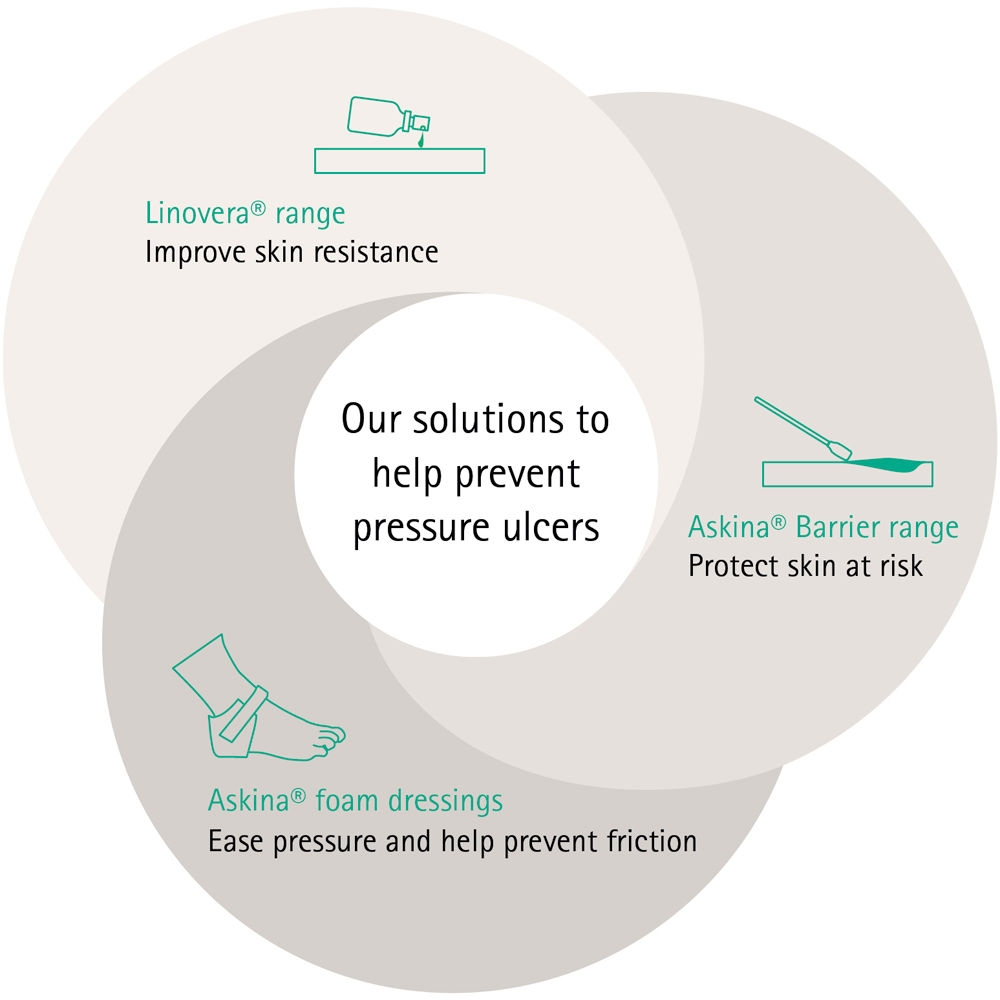
The importance of pressure ulcer prevention
Pressure ulcers can be caused if the blood supply to the skin or to the underlying tissues is compromised. Predisposing factors include limitations in activity/mobility, deficiencies in nutrition and skin moisture, inadequate perfusion, and the use of mechanical devices that exert pressure on the skin.[2]
Pressure ulcers may develop quickly - between the first hour and 4 to 6 hours after sustained loading.[3]
-
Up to
0%
of hospital acquired pressure ulcers are preventable.[1]
In most cases, pressure ulcers have a significant impact on patient morbidity[4] and quality of life[5] and can even impact patient survival.[2]
The cost of pressure ulcer treatment can be more than 2.5 times higher than prevention.[6]
Preventive measures to adapt
Adapt a holistic approach
Guidance on the prevention and management of pressure injuries is given by an internationally accepted clinical practice guideline.[7] It recommends a holistic approach integrating adapted nutrition,[8] comorbidity control[9], hydration[8] and skin moisture management[10] and others.

For example, whenever a patient enters a ward, a pressure ulcer risk assessment should be used, followed by a regular skin assessment to check for any signs of sores. Also, nutrition plays a huge role in the patient’s overall health status influencing the probability of developing pressure injuries. It is important to assess the nutritional needs and adapt the diet accordingly and ensure adequate hydration.
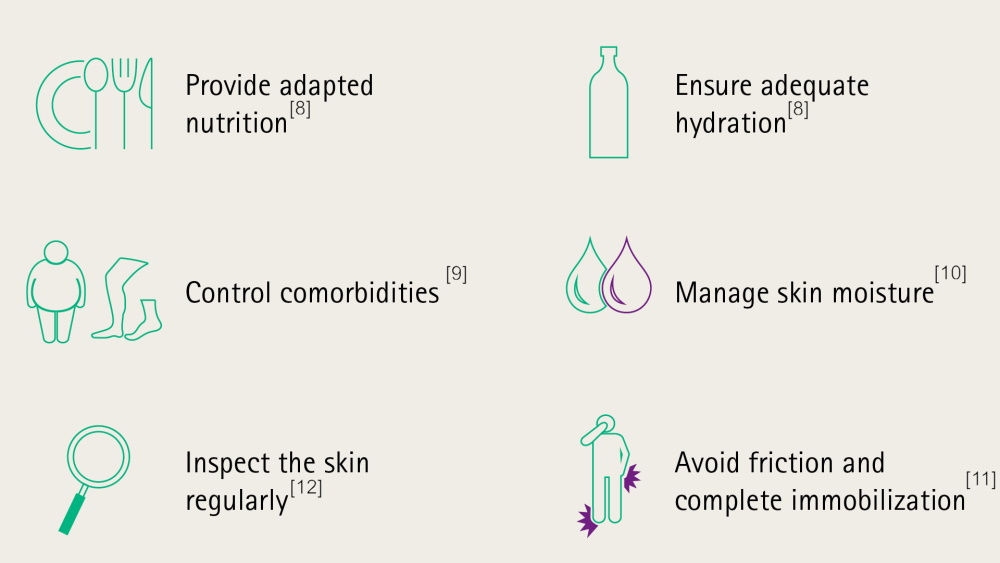
Our solution
Linovera® and Askina® to help to prevent pressure ulcers
We offer a combination of our soft, cushion-like dressing ranges Askina® DresSil and Askina® Foam designed to help to relieve pressure and avoid friction, with appropriate local skin moisture management products such as Askina® Barrier and Linovera®.
Linovera® is indicated for prevention and treatment of stage 1 pressure ulcers. Linovera® Emulsion is indicated for prevention and treatment of lower limb ulcers, diabetic foot ulcers and stage 1 pressure ulcers.
The products’ formulation is based on hyperoxygenated fatty acids, important linoleic acids which can contribute to a healthy skin structure. Other ingredients are Aloe Vera and Gingko Biloba (included only in Linovera® Emulsion) which act as emollient and humectant. Centella Asiatica is a soothing skin tonic agent.
Linovera® lubricates the skin, thus reducing shear and friction and maintaining the moisture barrier function of the skin.
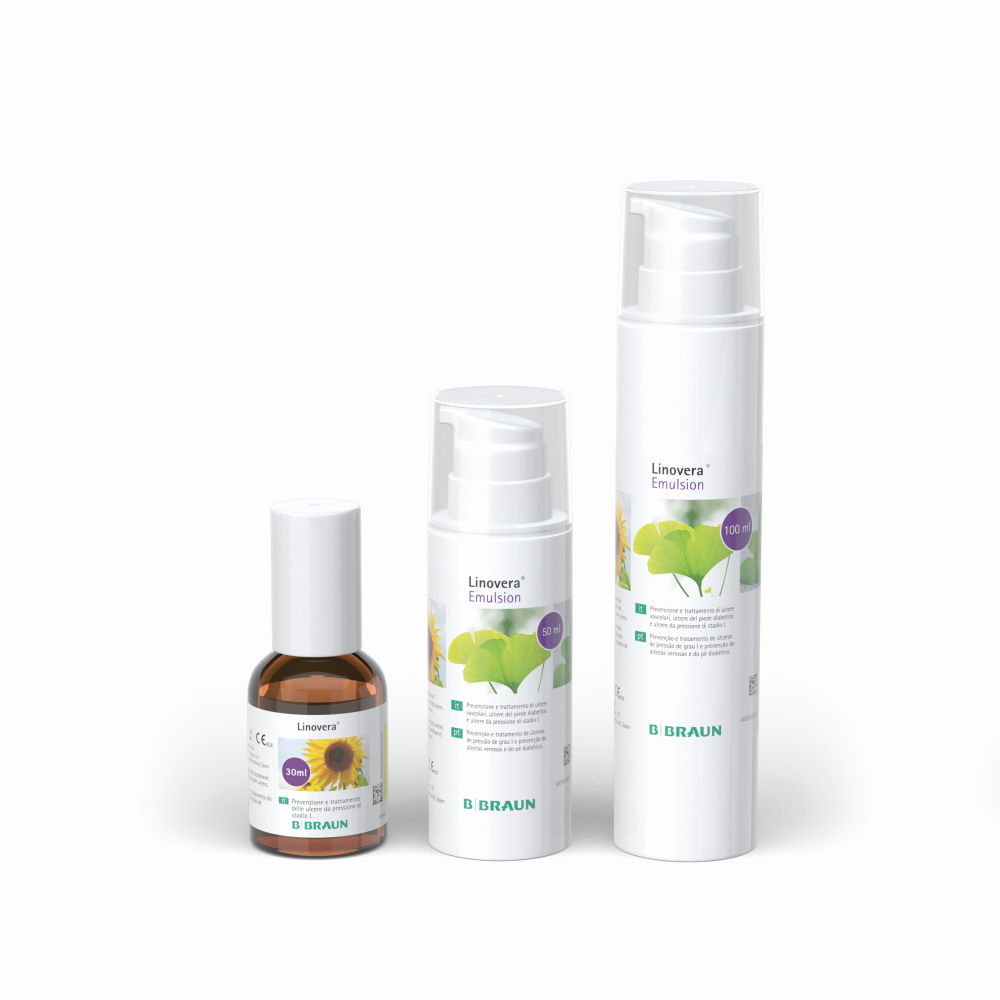
Skin protection products are used to help reduce the risk of trauma related excessive moisture. It is essential to avoid overexposure of the skin to moisture and implement prevention strategies focused on maintaining skin integrity.[10,13]
Askina® Barrier protects the skin from bodily fluids and provides a long-lasting barrier to the patient’s skin. It is available in three different formats: Askina® Barrier Cream, Askina® Barrier Film Spray or Askina® Barrier Film Swabs. Askina® Barrier Film Spray may be applied on intact or damaged skin and is particularly indicated for protection of peri-wound skin.
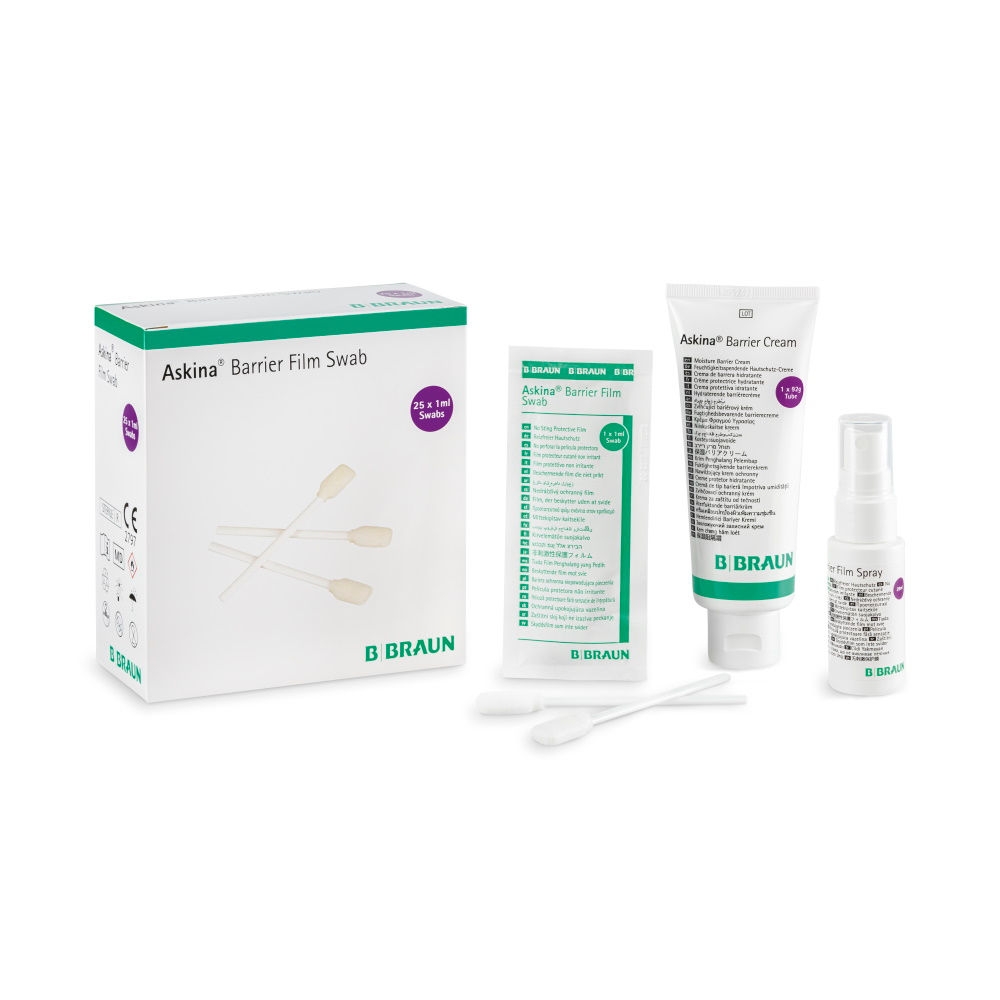
Areas such as the heels or sacrum are especially exposed non-stop to pressure and friction. Therefore, they need more protection. In addition to applying Askina® Barrier or Linovera® for moisture management anatomically shaped hydrocellular dressings are available to ease pressure.
Askina® Heel, Askina® DresSil Heel and Askina® DresSil Sacrum are manufactured to protect the heels, malleoli and the sacrum. Askina® Trachea is a specially designed foam dressing with a circular opening which fits neatly around a tracheostomy tube, stoma or other drain.
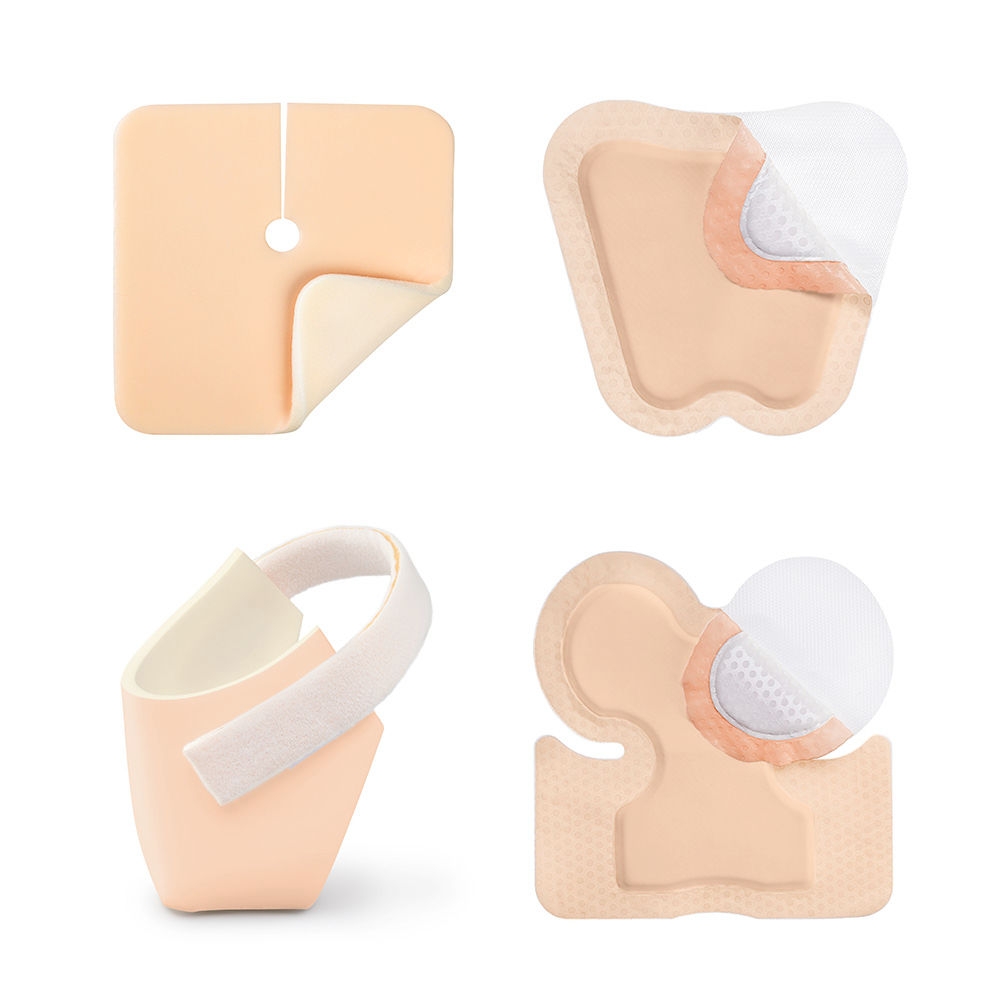
Bony protrusions are not the only parts of the body which may be exposed to pressure and friction. Other parts can be affected, e.g. by medical devices that exert pressure on the skin.[14]
Askina® DresSil is a foam with a silicone adhesive which provides gentle, secure adherence and low trauma during dressing changes. It can be cut and shaped for application on smaller areas which need protection.
Askina® DresSil Border is a foam dressing with silicone adhesive and an additional adhesive border, are made for difficult-to-dress or moving areas (knees, elbows, skin folds) as they are able to conform to a variety of anatomical contours.
Every foam dressing can be repositioned during application or even lifted up during wear time to check the skin or wound. They can also be applied on wounds as they provide a moist environment promoting natural healing.
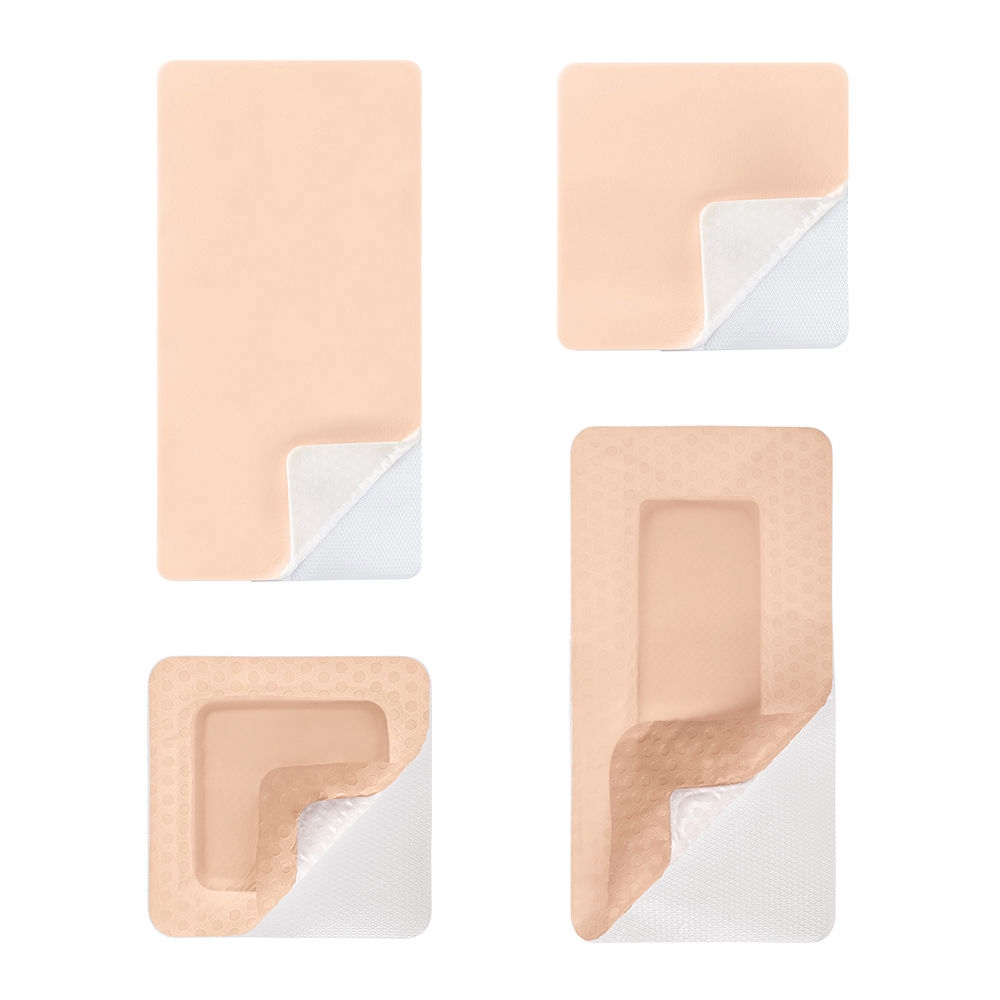
It is the story of Miguel Jopia Cuevas, a 60-year-old family father from Chile who had contracted COVID-19. After spending 39 days in hospital, he was discharged with a severe lumbosacral decubitus ulcer.
In the video, he reveals the tremendous impact of the pressure ulcer on all aspects of his life – emotions, family and his profession.
You will learn about his suffering and the consequences, not to mention the high costs associated with the subsequent treatment of the stage 3 pressure ulcer by a home care nurse.
Pressure ulcer treatment
Management of Miguel's pressure ulcer
Once a pressure ulcer has developed, it is important to quickly draw up a coordinated care plan to promote healing.[15,16] Learn more about how Miguel’s nurse managed to heal his bedsore.
More about pressure ulcer treatmentReferences
- Chaboyer W, Bucknall T, Webster J, McInnes E, Gillespie BM, Banks M, Whitty JA, Thalib L, Roberts S, Tallott M, Cullum N, Wallis M. The effect of a patient centred care bundle intervention on pressure ulcer incidence (INTACT): A cluster randomised trial. Int J Nurs Stud. 2016 Dec;64:63-71. doi: 10.1016/j.ijnurstu.2016.09.015. Epub 2016 Sep 23.
- Labeau SO, Afonso E, Benbenishty J, Blackwood B, Boulanger C, Brett SJ, Calvino-Gunther S, Chaboyer W, Coyer F, Deschepper M, François G, Honore PM, Jankovic R, Khanna AK, Llaurado-Serra M, Lin F, Rose L, Rubulotta F, Saager L, Williams G, Blot SI; DecubICUs Study Team; European Society of Intensive Care Medicine (ESICM) Trials Group Collaborators. Prevalence, associated factors and outcomes of pressure injuries in adult intensive care unit patients: the DecubICUs study. Intensive Care Med. 2021 Feb;47(2):160-169. doi: 10.1007/s00134-020-06234-9. Epub 2020 Oct 9. Erratum in: Intensive Care Med. 2021 Apr;47(4):503-520. PMID: 33034686; PMCID: PMC7880913.
- Gefen A. How much time does it take to get a pressure ulcer? Integrated evidence from human, animal, and in vitro studies. Ostomy Wound Manage. 2008 Oct;54(10):26-8, 30-5. PMID: 18927481.
- Graves N, Weinhold D, Tong E, Birrell F, Doidge S, Ramritu P, Halton K, Lairson D, Whitby M. Effect of healthcare-acquired infection on length of hospital stay and cost. Infect Control Hosp Epidemiol. 2007 Mar;28(3):280-92. doi: 10.1086/512642. Epub 2007 Feb 20. PMID: 17326018.
- Sebba Tosta de Souza DM, Veiga DF, Santos ID, Abla LE, Juliano Y, Ferreira LM. Health-Related Quality of Life in Elderly Patients With Pressure Ulcers in Different Care Settings. J Wound Ostomy Continence Nurs. 2015 Jul-Aug;42(4):352-9. doi: 10.1097/WON.0000000000000142. PMID: 26135820.
- Demarré L, Van Lancker A, Van Hecke A, Verhaeghe S, Grypdonck M, Lemey J, Annemans L, Beeckman D. The cost of prevention and treatment of pressure ulcers: A systematic review. Int J Nurs Stud. 2015 Nov;52(11):1754-74. doi: 10.1016/j.ijnurstu.2015.06.006. Epub 2015 Jun 25. PMID: 26231383.
- European Pressure Ulcer Advisory Panel, National Pressure Injury Advisory Panel, and Pan Pacific Pressure Injury Alliance. Prevention and Treatment of Pressure Ulcers/Injuries: Clinical Practice Guideline. The International Guideline. 3rd ed. Haesler E, ed. 2019. http://internationalguideline.com. Last accessed December 27, 2019.
- Munoz N, Posthauer ME, Cereda E, Schols JMGA, Haesler E. The Role of Nutrition for Pressure Injury Prevention and Healing: The 2019 International Clinical Practice Guideline Recommendations. Adv Skin Wound Care. 2020 Mar;33(3):123-136. doi: 10.1097/01.ASW.0000653144.90739.ad. PMID: 32058438.
- Jaul E, Barron J, Rosenzweig JP, Menczel J. An overview of co-morbidities and the development of pressure ulcers among older adults. BMC Geriatr. 2018 Dec 11;18(1):305. doi: 10.1186/s12877-018-0997-7. PMID: 30537947; PMCID: PMC6290523.
- Yusuf S, Okuwa M, Shigeta Y, Dai M, Iuchi T, Rahman S, Usman A, Kasim S, Sugama J, Nakatani T, Sanada H. Microclimate and development of pressure ulcers and superficial skin changes. Int Wound J. 2015 Feb;12(1):40-6. doi: 10.1111/iwj.12048. Epub 2013 Mar 12. PMID: 23490303; PMCID: PMC7950852
- Gerhardt LC, Strässle V, Lenz A, Spencer ND, Derler S. Influence of epidermal hydration on the friction of human skin against textiles. J R Soc Interface. 2008 Nov 6;5(28):1317-28. doi: 10.1098/rsif.2008.0034. PMID: 18331977; PMCID: PMC2607440.
- Lavallée JF, Gray TA, Dumville J, Cullum N. Preventing pressure ulcers in nursing homes using a care bundle: A feasibility study. Health Soc Care Community. 2019 Jul;27(4):e417-e427. doi: 10.1111/hsc.12742. Epub 2019 Mar 27. PMID: 30919525; PMCID: PMC6618244.
- Voegeli D, Hillery S. Prevention and management of moisture-associated skin damage. Br J Nurs. 2021 Aug 12;30(15):S40-S46. doi: 10.12968/bjon.2021.30.15.S40. PMID: 34379461.
- Barakat-Johnson M, Lai M, Wand T, Li M, White K, Coyer F. The incidence and prevalence of medical device-related pressure ulcers in intensive care: a systematic review. J Wound Care. 2019 Aug 2;28(8):512-521. doi: 10.12968/jowc.2019.28.8.512. PMID: 31393800.
- Stolt M, Hjerppe A, Hietanen H, Puukka P, Haavisto E. Local treatment of pressure ulcers in long-term care: a correlational cross-sectional study. J Wound Care. 2019 Jun 2;28(6):409-415. doi: 10.12968/jowc.2019.28.6.409. PMID: 31166863.
- Sibbald RG, Elliott JA, Persaud-Jaimangal R, Goodman L, Armstrong DG, Harley C, Coelho S, Xi N, Evans R, Mayer DO, Zhao X, Heil J, Kotru B, Delmore B, LeBlanc K, Ayello EA, Smart H, Tariq G, Alavi A, Somayaji R. Wound Bed Preparation 2021. Adv Skin Wound Care. 2021 Apr 1;34(4):183-195. doi: 10.1097/01.ASW.0000733724.87630.d6.
For more product information check also current Instructions for Use (IFU).
